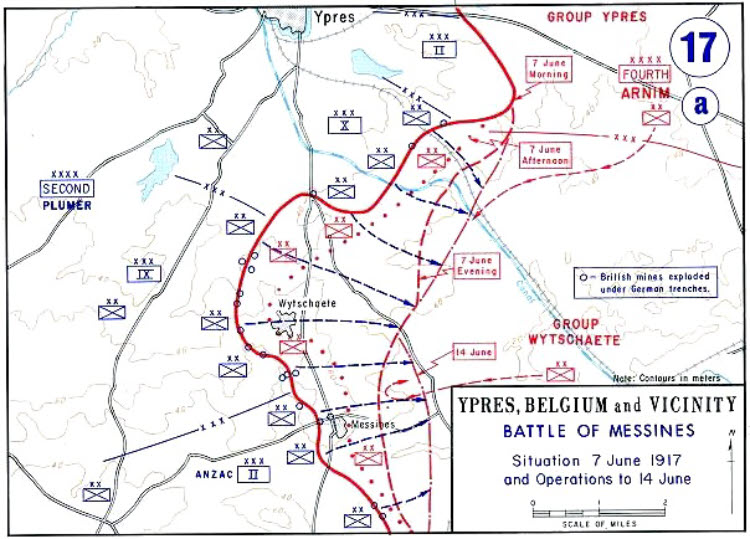
Harry Thornton Drake was born in 1897 in the Melton Mowbray, Leicestershire area, the third child and second son of worsted spinning manager, Harry Drake and Margaret Ann Greenwood who married on the 12th March 1889 at St Paul’s Church, Manningham, Bradford. Harry was a 30 year-old widower at the time of his marriage to Margaret Greenwood and the Bradford-born couple went on to have six children from their marriage but, sadly, two had died before April 1911. Their surviving children were all born in Leicestershire and the family had moved back to Yorkshire in the early 1900s.
In 1901, the Drake family were still living in Melton Mowbray, Leicestershire, but by 1911 Harry and Margaret Ann were living in the spacious eight-roomed ‘West Mount’ on Grove Road, Horbury.
Siege Batteries of the Royal Garrison Artillery were equipped with heavy howitzers, sending large calibre high explosive shells in high trajectory, plunging fire.The usual armaments were 6 inch, 8 inch and 9.2 inch howitzers, although some had huge railway- or road-mounted 12 inch howitzers. As British artillery tactics developed, the Siege Batteries were most often employed in destroying or neutralising the enemy artillery, as well as putting destructive fire down on strongpoints, dumps, store, roads and railways behind enemy lines.
239th Siege Battery embarked for France in January 1917 and Gunner Drake was killed in action on the 6th June 1917 during the opening stages of the Battle of Messines.
The Battle of Messines (7–14 June 1917) was an offensive conducted by the British Second Army, under the command of General Herbert Plumer, on the Western Front near the village of Messines in Belgian West Flanders. The Nivelle offensive in April and May had failed to achieve its more ambitious aims and this had resulted in the demoralisation of French troops and the dislocation of the Anglo-French strategy for 1917. The offensive at Messines forced the German Army to move reserves to Flanders from the Arras and Aisne fronts, which relieved pressure on the French Army. The tactical objective of the attack at Messines was to capture the German defences on the ridge, which ran from Ploegsteert (“Plugstreet”) Wood in the south through Messines and Wytschaete to Mt. Sorrel, to deprive the German Fourth Army of the high ground south of Ypres. The ridge commanded the British defences and back areas further north, from which the British intended to conduct the “Northern Operation”, to advance to Passchendaele Ridge, then capture the Belgian coast up to the Dutch frontier.
The Second Army contained five corps, of which three conducted the attack and two remained on the northern flank, not engaged in the main operation; the XIV Corps was available in General Headquarters reserve (“GHQ reserve”). The battle began with the detonation of 19 mines (out of 21 mines actually in place), which devastated the German front line defences, followed by a creeping barrage 700 yards (640 m) deep, covering the British troops as they secured the ridge, with support from tanks, cavalry patrols and aircraft. The effectiveness of the British mines, barrages and bombardments was improved by advances in artillery survey, flash-spotting and centralised control of artillery from the Second Army headquarters.1
Of the two mines which remained undetonated on the 7 June 1917, the details of their precise location were mislaid by the British following the war, to the discomfort of local townspeople. One of the mines was detonated in a thunderstorm on the 17th June 1955: the only casualty was a dead cow. The second mine remains undetected, although in recent years its location is believed to have been pinpointed. No-one has as yet attempted its recovery.

Harry Thornton Drake’s army service record has not survived, but he enlisted at Horbury and was posthumously awarded the British and Victory medals, but not the 1914-15 Star, indicating that he did not serve overseas before 31 December 1915.
Gunner Harry Thornton Drake, aged 20 years, son of Harry and Margaret Ann Drake, of Grove Road, Horbury, Wakefield was killed in action on the 6th June 1917, he is buried at grave reference C. 8. at the Kemmel Chateau Military Cemetery, 2 Heuvelland, West-Vlaanderen, Belgium. Kemmel Chateau Military Cemetery is located 8 Kms south of Ieper on a road leading from the Kemmelseweg (N331), connecting Ieper to Kemmel.
Kemmel Chateau was north-east of Kemmel village and the cemetery was established on the north side of the chateau grounds in December 1914. It continued to be used by divisions fighting on the southern sectors of the Belgian front until March 1918, when after fierce fighting involving both Commonwealth and French forces, the village and cemetery fell into German hands in late April. The cemetery was retaken later in the year, but in the interval it was badly shelled and the old chateau destroyed.
There are now 1,135 Commonwealth burials of the First World War in the cemetery and 21 from the Second World War (which all date from the Allied withdrawal ahead of the German advance of May 1940).
CWGC heastone photograph courtesy of Mark Smith
References: